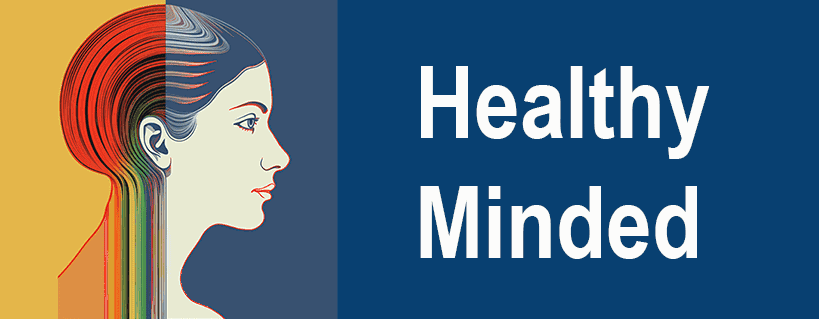Humankind underwent an unimaginable transformation in the last millennium. The Science Museum of London, England estimates that we communicated using language as much as 100,000 years ago. Historians posit that prior to the development of language, humans communicated through writing. Yet, many brilliant people over the centuries with dysgraphia and writing disabilities prospered, succeeded, and showed demonstrated genius (think: Einstein).
Before inscriptions, clay tokens were used for the purpose of counting and accounting. These tokens eventually evolved into symbols and pictography. These symbols and pictures were used to convey meaning, just as written symbols today are used.

Assigning sound to symbols was a critically important advancement in the evolution of writing. This led the way to language as we know it today.
This article explores different types of learning disabilities in relation to writing, how the web helps and hinders those with disabilities, and how universities and employers can help those with writing disabilities.
Learning Disabilities and Writing
Many learning disabilities affect one’s ability to write. These learning disabilities – whether due to problems with expression or difficulty putting thoughts into words – cause issues with communication. It is common for those affected by learning disabilities to have more than one disability. Luckily, learning disabilities have been thoroughly studied, and several advancements in the field allow for improvement.
There are also resources to help those with learning disabilities improve and manage their symptoms. It is less difficult to diagnose and treat writing disabilities vs. just 25 years ago. Writing requires several functions, including graphomotor, attention, spatial ordering, sequential ordering, memory, language, and high-order conditioning to work in unison. Because it is incredibly complex, a lack of even one of these functions can considerably impair an individual’s ability to communicate through writing.
Dysgraphia
One of the most common learning disabilities that affects writing ability is dysgraphia, whereby spelling, grammar, punctuation, handwriting, and expressing oneself on paper is difficult for someone who can verbally communicate with ease.
The motor areas responsible for writing or drawing make it difficult for someone dealing with dysgraphia to picture how letters and words are supposed to look. According to DSF, this may result in “letters [written] in reverse, trouble recalling how letters are formed, or [knowing] when to use lower or upper case letters […] omitting words, words ordered incorrectly, incorrect verb and pronoun usage and word ending errors.” This can be very frustrating, especially if dysgraphia is left undiagnosed.
Luckily, there are several assistive technologies that aim to help those with dysgraphia work around their difficulties writing with programs such as speech-to-text and spelling and grammar software.
Dyslexia
Dyslexia is another learning disability that affects writing and currently impacts one in five people. Typically dyslexia is seen as a disability that affects one’s ability to read and spelling abilities.
Since reading and writing skills develop in unison, trouble reading causes issues such as poor spelling and difficulties with expression in the form of writing. Some people with dyslexia describe their reading experience as frustrating because letters appear jumbled and it takes a lot of concentration to read. A 2016 article by Tiffany Ap on CNN describes life with dyslexia and simulates a reading experience while living with the disorder. The letters and words seem to jump around and it takes a great deal of concentration and patience to read a sentence.
Dyspraxia
Dyspraxia, like dyslexia, is also known as developmental coordination disorder (DCD), and is a disability that affects writing by impairing one’s ability to coordinate physical movement. Dyspraxia can also affect motor skills necessary to move the mouth and tongue, thus impairing the pronunciation of words.
According to the Dyspraxia Foundation, “Many people with DCD […] experience difficulties with memory, perception, and processing. While DCD is often regarded as an umbrella term to cover motor coordination difficulties, dyspraxia refers to people with additional problems planning, organizing and carrying out movements in the right order in everyday situations.
Dyspraxia can also affect articulation and speech, perception, and thought. ”The inability to coordinate the fine motor skills necessary for writing make dyspraxia a very frustrating disability for both children and adults. Several interventions, including the Teodorescu Perceptuo-Motor Programme, aimed at increasing the motor skills necessary for effective writing.
Web Accessibility and Writing Disabilities

The web is both a blessing and a curse for those with learning disabilities. On one hand, the web is filled with easily accessible information. On the other hand, much of this information is not formatted in an accessible manner. The vast amount of information available online can seem daunting with a disability like dyslexia. The process of sifting through thousands of search results can be daunting for those with the added challenges presented by dyslexia.
As web accessibility becomes more common, the web could become very useful for those with writing disabilities, including a developmental coordination disability like dyspraxia. The fine motor skills necessary for writing are also needed for typing and scrolling, but to a lesser degree. Those with dyspraxia might have a much easier time typing, especially with the use of spelling and grammar-checking functions or tools like Grammarly. For a learning disability such as dyslexia, lots of work has gone into developing a font, called OpenDyslexia, which minimizes many of the symptoms of dyslexia. Bottom-heavy fonts help those with dyslexia read more easily by signaling direction to the brain, making it less likely for letters to get rotated.
Several initiatives are in place, including the Web Accessibility Initiative, which aims to standardize online accessibility for the learning disabled. For writers, the Web Accessibility Initiative lays out a set of guidelines for making web pages more accessible to people with learning disabilities.
- Provide informative headlines and headings that communicate structure. Providing proper headlines assists persons with reading and writing disabilities in knowing the purpose and context of what they’re reading without having to get through the whole text to figure it out. This isn’t to say that you’re giving everything away just in your headings and subheadings, but you are making it easier for someone with a learning disability to understand the content of your work.
- Make link text meaningful. Don’t just hyperlink something with no context. The sentence leading up to the link (and the link itself) should allow someone to easily understand the purpose and role of the link without clicking on it.
- Provide meaningful text alternatives for images. Whenever showing an image that’s supposed to provide meaningful information, write a detailed but clear description of the information being conveyed.
- Create transcripts for multimedia. If you’re producing videos or podcasts, create transcripts of your content and captions for your videos. Transcripts allow someone to process your content in a way that might be easier for them, while captions make absorbing media in the form of a video much easier.
- Keep content or instructions clear and concise, especially when providing written instructions. For example, when formatting or building a form, it’s best to provide clear instructions on each field in the form with an example (e.g., when asking for a birthday, describe the order of the day, month, and year that is required).
- Keep it simple. The style of writing used can make a big difference in comprehension for the reader. It’s suggested that sentences should be short and clear, and complex and rarely used words should be avoided. Formatting must be used appropriately with the goal of enhancing clarity (e.g., using bulleted lists is helpful instead of long run-on sentences), and acronyms should be fully expanded when used for the first time (e.g., write the National Basketball Association instead of the NBA).
According to the Dyslexia Institute of Ireland, content can be made further accessible to those with dyslexia by using the fonts Arial, Verdana, or Sassoon in font size 12 or higher. It’s also recommended to keep all sentences and paragraphs short, use a wide margin between lines (i.e., at least 1.5 spacing on Microsoft Word), avoid unnecessarily complex wording, and “break information up” using bulleted points and numbers. White space on a page is usually more visually appealing for the reader and goes a long way to increasing reader comprehension.
Is Writing The Most Important Skill Needed in University or On The Job?

If you’re able to effectively communicate verbally, writing may not be the most important skill needed in university or in your workplace. Universities cater to people with a whole host of disabilities and are continually trying to make university an inclusive place where everyone can thrive. Most, if not all universities have centers for students with learning disabilities; these centers teach students different coping techniques for success in the university environment. They also provide students with a number of accommodations and even screening services if they suspect they have a learning disability but haven’t been diagnosed.
Accommodations & support in school or the workplace
Accommodations can include extra time on exams, a “buddy” service where someone provides you with thorough class notes, extra time on exams and assignments, various tutoring supports, accessibility counselors, and even labs with assistive technologies. As a student, you will find many resources available to help you thrive in the academic environment.
An example of a University with well-established programs for students with disabilities is the University of Toronto, where they have advisors who “work with the student to determine the impact of the disability and, in particular, the functional limitations the disability has on the student’s academic programs to determine appropriate accommodations.” They design programs for each student with a disability “in order to mitigate the negative effects of a disability and allow the student to function optimally”. Most Universities have similar programs to accommodate students with special needs.
Like universities, many workplaces provide their employees with support services and pride themselves on being non-discriminatory against people with learning disabilities. Human resources departments of large companies make an effort to ensure that employees from all walks of life have an opportunity to succeed. For example, Google has a disability alliance for their employees with special needs. They “share advice, advocate, build awareness, and are passionate about creating innovative and inclusive teams, products, education, and workplaces.”
Another example is Facebook, who will help with the job application process. “Facebook is committed to providing reasonable accommodations for qualified individuals with disabilities and disabled veterans in our job application procedures. If you need assistance or accommodation due to a disability, you may contact us.”
Don’t let dysgraphia hold you back
Educational tutors and professional counselors are well-equipped to assist those with writing disabilities, including dysgraphia. Dysgraphia and writing disabilities broadly encompass challenges in handwriting, typing, spelling, grammar, punctuation, and organizational skills. Individuals experiencing these difficulties might find it hard to express their thoughts in writing, write at a slower pace, or require more effort to write than others. These challenges can impact academic performance, self-esteem, and future career prospects.
Tutors and counselors can offer multifaceted support to those with dysgraphia and other writing disabilities. This support can include:
- Analyzing the individual’s writing skillset, highlighting their strengths, and identifying areas for improvement.
- Instructing in strategies and techniques aimed at enhancing writing skills. This could encompass graphic organizers, outlines, mnemonics, word banks, spell-checking software, and voice recognition tools.
- Providing constructive feedback and words of encouragement to help build confidence and motivation in writing.
- Assisting with the emotional and social repercussions of living with a writing disability or dysgraphia, which can involve managing stress, anxiety, frustration, or feelings of low self-esteem.
- Advocating for the individual’s rights and needs in academic or professional settings, including suggesting accommodations or modifications that can simplify or improve accessibility to writing tasks.
Certainly, there are many career paths where writing skills are not paramount. Moreover, suppose your dream is to become a lawyer, or copywriter, or pursue another profession that traditionally requires strong writing skills. In that case, there’s no reason you cannot excel in these fields. Patience with yourself, coupled with the utilization of all available resources and opportunities, will enable you to overcome any obstacles. In the current climate of inclusivity, even settings previously thought to be inaccessible to those with unique needs are making significant progress in accommodating different disabilities.
- Fear of Stupidity: Effects and Treatments for Stultophobia - February 16, 2024
- Body Scan Chronicles: Our Publisher Breaks Through Chronic Pain With Meditation - January 23, 2024
- VR Meditation App: A Beginner’s Guide to Virtual Reality Meditation - July 13, 2023
